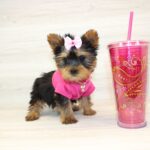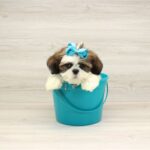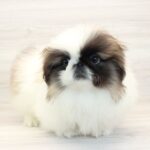If you are planning on getting a Pug Pomeranian mix, then you must know a few important facts about them. Pugs are extremely friendly and get along well with most people, but the Pug Pomeranian mix can also be stubborn and mischievous. Before you purchase a Pug Pomeranian mix, you must make sure you are buying a pup from a good breeder. Good breeders use ethical breeding practices and have a standard for their puppies. It is a good idea to check for references and animal conditions from friends and neighbors and do some research on the breeder.
Health issues
Pugs and their Pug-Pomeranian mix cousins have some unique health issues. Pugs tend to have prominent eyes that can lead to insufficient tear production. This can lead to painful ulcers and infection, and can even result in eye loss. Besides these conditions, pugs also tend to have undershot jaws and short noses, which can result in tooth overcrowding. To prevent this problem, your pug should receive routine dental care. Overcrowding can lead to tartar and plaque buildup, which can progress to periodontal disease.
Although Pug-Pomeranian mixes are typically healthier than purebred breeds, their genes can cause some health problems. These include problems with circulation and breathing, as well as an increased tendency to overeat. Pomeranian-Pug mixes are best suited for apartments or houses that provide ample space for exercise. A Pug-Pomeranian mix’s lifespan is eight to fifteen years.
As with any other small breed, Pomeranian-Pug mixes have similar dietary requirements. They need about one cup of food a day. Although this amount of food may seem excessive to you, your pup needs all of these essential nutrients to maintain good health and long life. To find a suitable dog food, you can look for nutritional information on the label or consult with a veterinarian. They can also give you recommendations.
Another common health problem in a Pug-Pomeranian mix is hypoglycemia, which occurs when the blood sugar level drops suddenly. Hypoglycemia is especially dangerous in small breeds, and is most common in puppies and dogs under three months of age. Symptoms of hypoglycemia can include weakness, loss of appetite, twitching muscles, and lack of coordination. To avoid any of these issues, keep a jar of honey in the house or carry a small bowl of honey with you when you are out and about. If you see these symptoms, take your dog to the vet immediately for treatment.
Coat care
If you want to give your Pug or Pomeranian mix a beautiful coat, you’ll need to follow a few simple rules for caring for your pet’s fur. For starters, you’ll need to brush your dog’s coat at least twice a week. Then, you’ll need to brush their ears, which are pendulous. Finally, your pooch’s teeth will need to be brushed at least twice a week.
The Pug is one of the best-looking dogs around, but its short muzzle can make it difficult to keep clean. Pug eyelids are notorious for protruding, and should be wiped clean often. It’s important to prevent eye allergies from affecting your pet’s vision. If you see any signs of puffiness or floaters around their eyes, seek veterinary care right away.
The face is also prone to stains, which can ruin the overall look of your pet. Porphyrins, which are found in basal tears, are the culprits. Avoid overly-tearing your Pug and Pomeranian mix because it’s likely to be a sign of allergies. But you can’t blame the dog for a tearful face – it’s only natural to shed more than usual!
A Pom-A-Pug’s fur is unique in that it combines the characteristics of both breeds. The Pomeranian has a fluffy, long coat, while the Pug has a short, sleek coat. They can be short or medium-haired, and their coats are a mix of different colors. The pomeranian has a coat that is smooth or slightly coarse. The Pom-A-Pug’s coat will require less grooming than the other breeds.
Training
When training your Pug Pomeranian mix, start with a basic command like sit. This command will help you establish good behavior and obedience. It’s important to be patient and supervise training at all times, as pugs are prone to frustration and resentment. Be sure to correct mistakes often, since bad habits can develop quickly. Training your Pug is not difficult if you work at a level your puppy can handle.
The Pug is the perfect family dog, as it has an excitable temperament that is well suited to children of any age. Because it’s small, it won’t bite small children and will form a close bond with its family. In addition, it is very protective of its family, so it is a good choice for families with children. But before you start training your Pug, be sure to consider the following information.
A Pug Pomeranian mix is a cross between the Pug and the Cairn Terrier. The resulting breed will look like a smaller version of a pug, and will have a longer coat that doesn’t shed as much as a purebred pug. It’s not as difficult to train a Pug Pomeranian mix than a purebred Pug, and it’s usually less prone to health problems than the average Pug.
If you’re unsure whether this breed is right for your family, consider your options before making a decision. Pomeranians are small, but mighty in personality. These dogs have German origins, but the name comes from the province of Pomerania, which was Queen Victoria’s choice for a dog. They’re highly intelligent, which makes them an excellent watchdog. However, this breed is often stubborn and requires careful training.
Grooming
The Pomeranian Pug mix is a designer breed that is both friendly and affectionate. Known as Pom-a-Pug, this dog breed is small in size and is a popular choice for pet owners. Different international breed associations recognize the breed. They can come in any color and have either a short or long coat. You will likely notice that grooming your Pom-a-Pug will be easy and won’t be a hassle.
As with any breed, Pomeranians need their nails trimmed from time to time. Depending on the size and shape of the mat, you may need to visit a pet groomer every six weeks to trim the nails. However, larger knots may need to be treated carefully since the skin on Pomeranian is much thinner than on humans. For smaller mats, you can use a mat breaker, but for larger and more complicated mats, you can cut the knots with scissors.
There are two types of cuts for Pomeranians. The first is called the tidy cut and is intended to give the dog a natural look. The second style is known as the show cut, which is usually standard for dog shows, but is also popular among everyday owners. It involves some clipping and thins the coat throughout the body. This style is also good for enhancing the head, which is an essential characteristic of Pomeranian breeds.
Regular baths are important to keep your Pomeranian mixed with a Pug clean. Baths should be taken regularly, especially during allergy seasons. Regular baths do not have to be daily, but they are important, especially if your Pomeranian is exposed to dirt or dust. A metal-pin slicker brush is an excellent tool for detangling your Pomeranian.
Personality
Pug Pomeranian mix breeds are known for their gentle temperaments, playful nature, and loyalty to their owners. They thrive in warmer climates and enjoy being outside. They are highly intelligent and take training very well. Although they are small in size, they are well-socialized with other dogs and children. A pug is a great pet for families with small children. They can be trained to sit, fetch, or lay down, but they may not be interested in learning these skills until they are fully grown.
The pug is known for its comical face, which is evident in its name, which translates to “fist.” Despite their clownish appearance, Pugs are sweet-natured, loyal, and playful. Although their name derives from a Latin word that means “fist,” the breed still maintains a high level of dignity. While they may be a lovable, affectionate dog, Pugs need close human interaction and attention. They tend to become heartbroken if they are left alone or ignored.
This hybrid is a pint-sized bundle of energy, intelligence, and affection. Their short, wrinkly faces and jovial nature make them excellent companions for children. This breed is cheerful, independent, playful, and friendly, but can be stubborn when they feel threatened. They also make good watchdogs. This type of personality is a great addition to any family. These puppies are also great watchdogs.
Pugs are prone to eye problems. They can suffer from proptosis, which causes the eyeball to dislocate from its socket, and distichiasis, which causes abnormal eyelashes to grow on the margin of the eye. Another serious condition that pugs can develop is progressive retinal atrophy, which can lead to blindness. Entropion, on the other hand, causes the eyelid to roll inwards, causing irritation.






